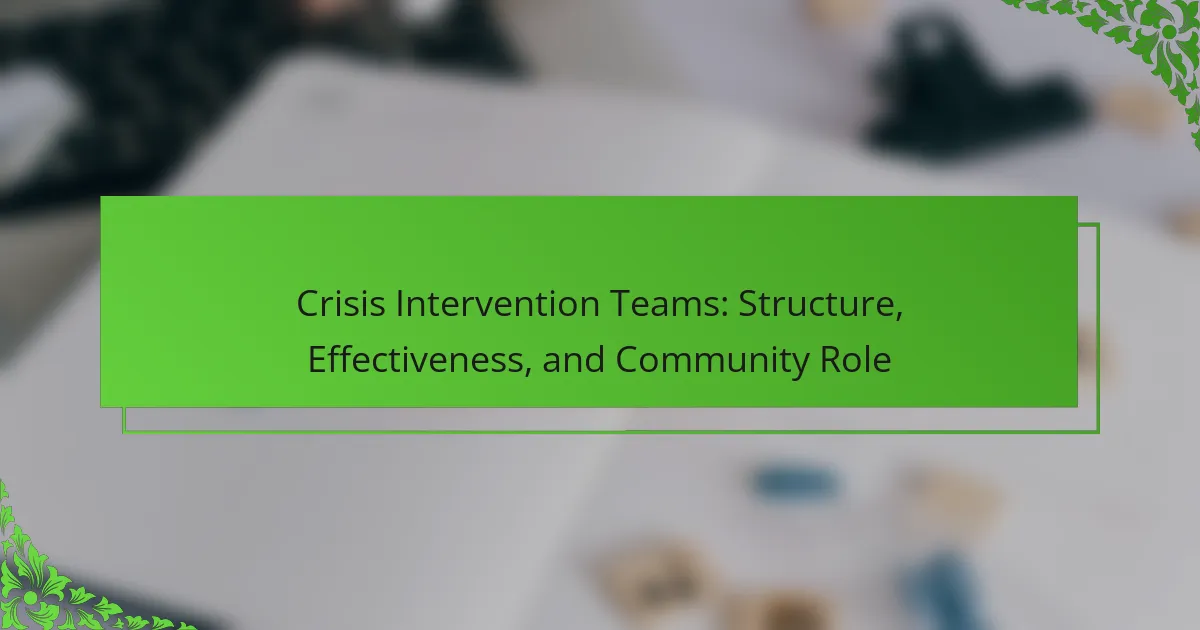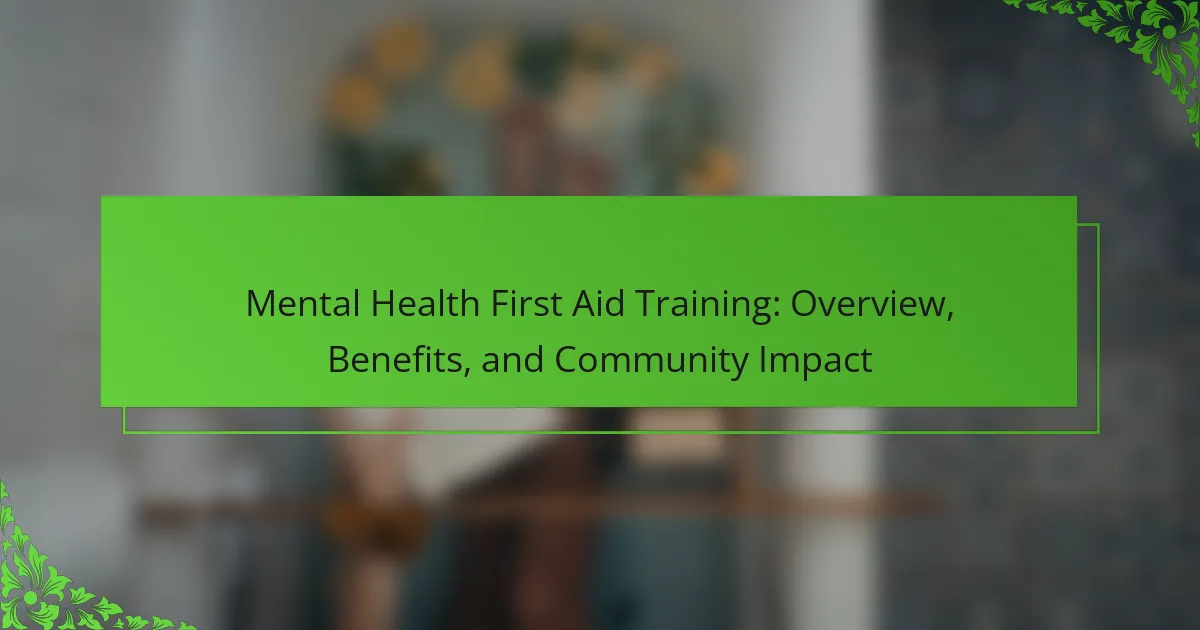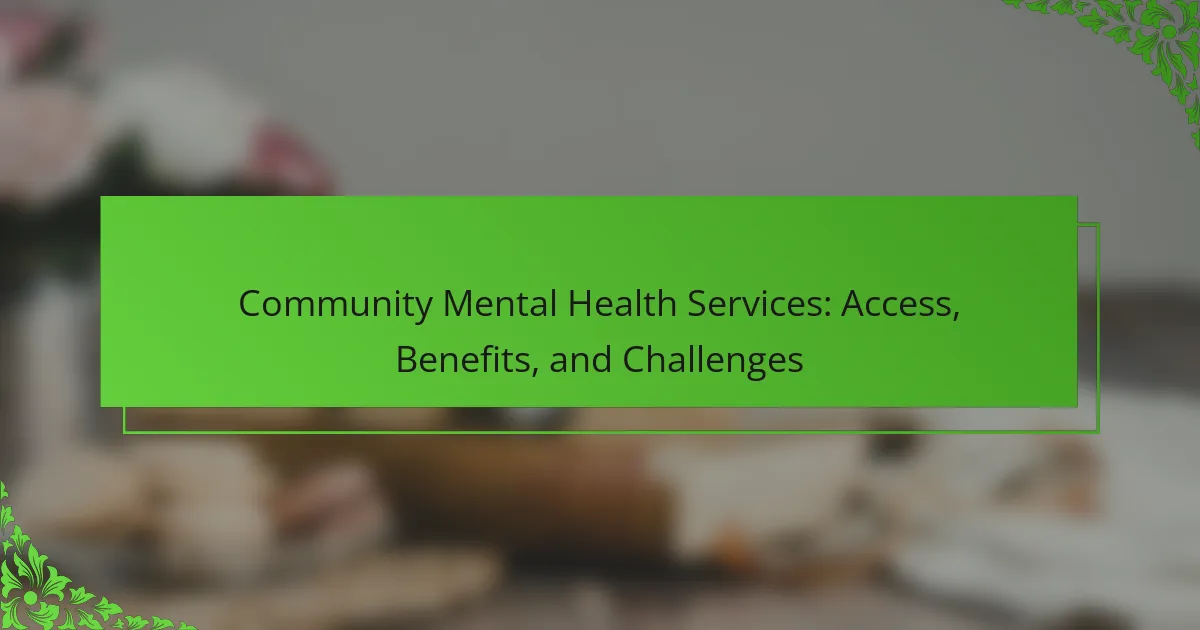Crisis Intervention Teams (CIT) play a crucial role in responding to mental health crises, enhancing public safety through immediate support. This article explores the structure of CITs, their effectiveness in various scenarios, and their collaborative role within the community. It also addresses the challenges they face and future trends that aim to improve their impact.
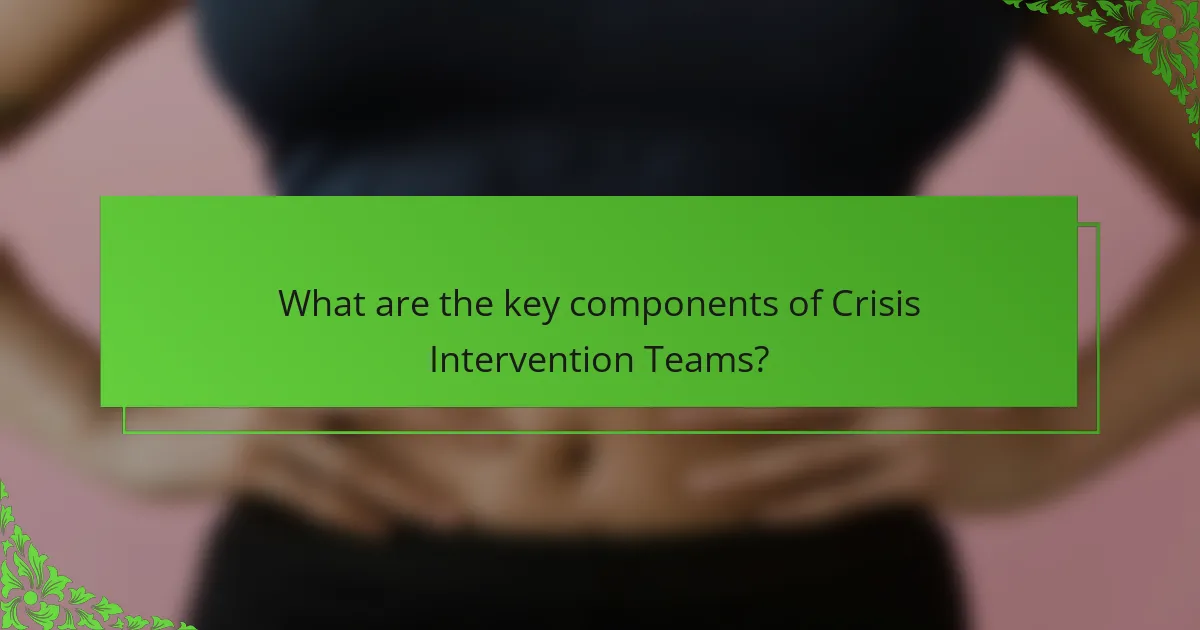
What are the key components of Crisis Intervention Teams?
Crisis Intervention Teams (CIT) comprise trained professionals who respond to mental health crises. Key components include collaboration among law enforcement, mental health providers, and community resources. Effective CITs enhance public safety and provide immediate support to individuals in crisis. Their structure typically involves specialized training, clear communication protocols, and established partnerships with local mental health services.
How do team structure and roles influence effectiveness?
Crisis intervention teams’ structure and roles significantly enhance their effectiveness. A well-defined team structure promotes clear communication and efficient response during crises.
Roles within these teams, such as crisis negotiators and mental health professionals, ensure diverse expertise. This specialization allows for tailored interventions that address specific community needs.
Effective teams often utilize a hierarchy that clarifies responsibilities and streamlines decision-making. This organization fosters accountability and improves outcomes in crisis situations.
Communities benefit from engaged and well-structured teams that can adapt to various challenges, ultimately leading to better support for individuals in crisis.
What training do team members typically undergo?
Crisis intervention team members typically undergo specialized training in de-escalation techniques, mental health awareness, and communication skills. This training enhances their ability to effectively manage crises and support individuals in distress. Team members often participate in scenario-based exercises to practice their skills in real-life situations. Continuous education and training updates ensure they remain effective in their roles.

How effective are Crisis Intervention Teams in various scenarios?
Crisis Intervention Teams (CITs) are highly effective in various scenarios, especially in mental health crises. They improve outcomes by providing immediate support and reducing the need for hospitalization.
CITs enhance communication between law enforcement and mental health professionals, fostering better community relations. They are particularly successful in de-escalating situations involving individuals experiencing severe distress, which minimizes the risk of violence.
Statistics show that CIT training for officers leads to a 40% reduction in use-of-force incidents. Additionally, studies indicate that communities with CIT programs report lower rates of incarceration for individuals with mental health issues.
The unique attribute of CITs is their structured approach, integrating mental health crisis intervention with law enforcement. This model not only addresses immediate safety concerns but also connects individuals to necessary mental health services, promoting long-term recovery.
What metrics are used to measure success?
Crisis intervention teams measure success through various metrics, including response time, resolution rates, and community feedback. These metrics provide insights into the team’s effectiveness and community impact.
| Metric | Description | Value |
|———————|———————————————–|————————-|
| Response Time | Average time taken to respond to incidents | 10 minutes |
| Resolution Rate | Percentage of cases resolved on-site | 85% |
| Community Feedback | Satisfaction ratings from community surveys | 4.5 out of 5 |
| Follow-Up Engagement | Number of follow-up interactions with clients | 70% |
| Training Hours | Total hours of training for team members | 100 hours annually |
| Cost Efficiency | Cost per intervention compared to traditional methods | 30% lower than average |
How do outcomes vary by community demographics?
Outcomes of Crisis Intervention Teams vary significantly by community demographics. Factors such as socioeconomic status, racial composition, and local resources influence effectiveness. For instance, communities with higher socioeconomic status often report better outcomes due to increased access to mental health services. In contrast, marginalized communities may experience barriers that hinder effective intervention, such as mistrust of law enforcement or lack of culturally competent resources. Understanding these demographic nuances is essential for tailoring Crisis Intervention Teams to meet specific community needs.
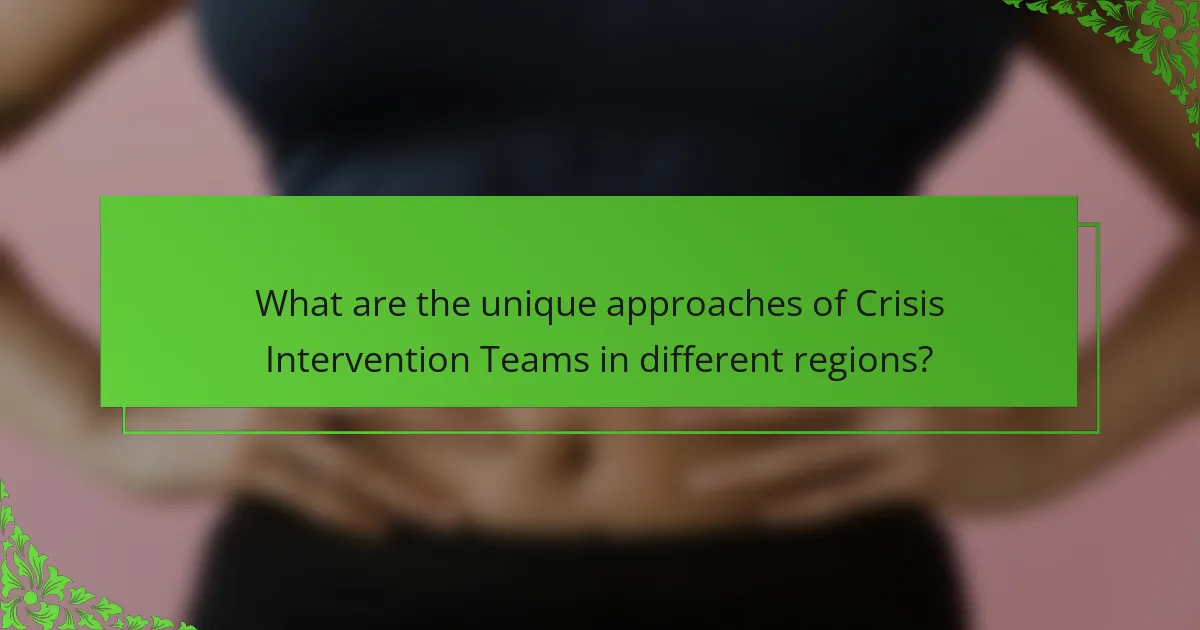
What are the unique approaches of Crisis Intervention Teams in different regions?
Crisis Intervention Teams (CITs) adopt unique approaches based on regional needs and resources. In urban areas, CITs often emphasize collaboration with mental health professionals to address high call volumes effectively. Rural regions may focus on community training to empower local responders, enhancing accessibility to mental health resources. Some regions implement specialized training for officers to handle diverse cultural contexts, ensuring sensitivity in interactions. This adaptability reflects the CIT’s commitment to improving outcomes in various environments.
How do cultural factors shape intervention strategies?
Cultural factors significantly influence the design and effectiveness of crisis intervention teams. These teams must understand community values, beliefs, and norms to tailor their strategies effectively. For example, cultural perceptions of mental health can dictate how individuals respond to intervention efforts.
Moreover, training that incorporates cultural competence enhances team responsiveness. This approach fosters trust, which is crucial for successful interventions. Community engagement in developing these strategies ensures they resonate with local populations, increasing their overall effectiveness.
Understanding cultural factors also aids in identifying unique attributes of specific communities, allowing teams to address rare needs. As a result, crisis intervention becomes more inclusive and effective, ultimately improving outcomes for individuals in crisis.
What innovative practices have emerged in urban versus rural settings?
Crisis Intervention Teams (CITs) in urban settings often focus on immediate response and resource accessibility, while rural CITs emphasize community integration and relationship-building. Urban teams typically have structured protocols and access to diverse services, enhancing effectiveness. In contrast, rural teams may face resource limitations but foster strong community ties, which can improve intervention outcomes. Both settings demonstrate unique attributes in their approach, reflecting local needs and available resources.
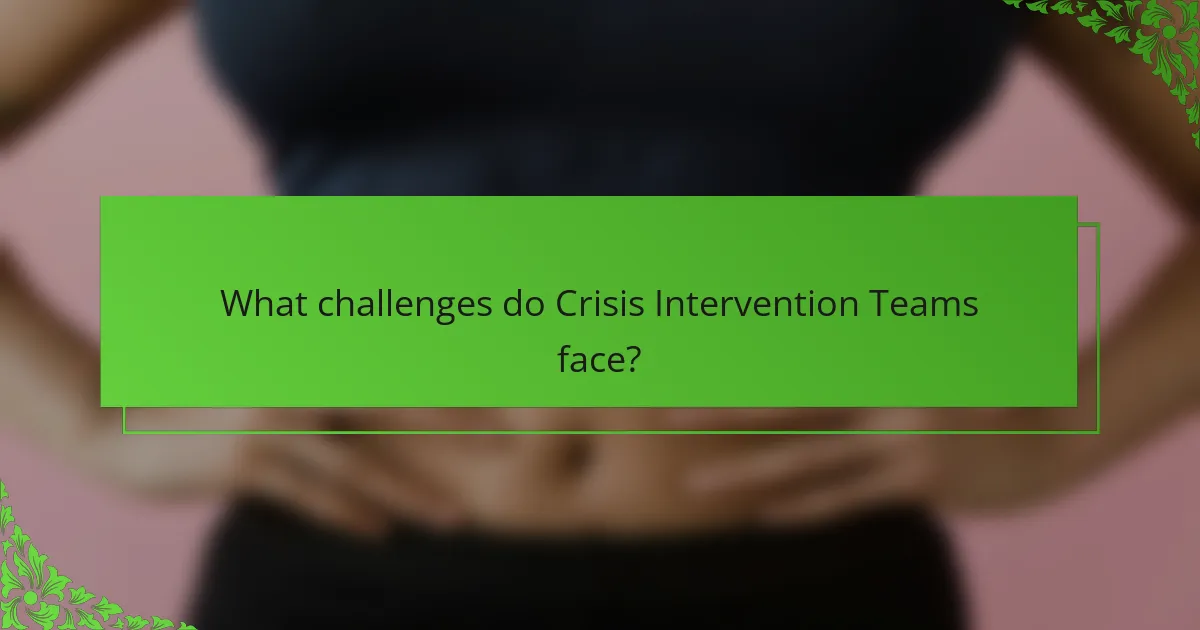
What challenges do Crisis Intervention Teams face?
Crisis Intervention Teams face challenges such as limited resources, inadequate training, and community stigma. These factors hinder their effectiveness and ability to respond to crises efficiently. Additionally, coordination with other agencies can be complex, leading to delays in intervention. The evolving nature of mental health issues further complicates their work, requiring ongoing adaptation and education.
How do teams address stigma and community perceptions?
Crisis intervention teams address stigma and community perceptions through education, collaboration, and visibility. They engage with community members to reshape narratives around mental health and crisis response. Training programs enhance understanding and reduce misconceptions about mental health crises. Teams actively participate in community events, fostering trust and encouraging dialogue. As a result, this approach improves public perception and promotes acceptance of mental health issues.
What are common operational hurdles during interventions?
Common operational hurdles during interventions include communication breakdowns, insufficient training, resource limitations, and lack of community support. These challenges can hinder the effectiveness of Crisis Intervention Teams. For instance, unclear communication can lead to misunderstandings among team members and the community, while inadequate training may result in improper handling of crisis situations. Resource limitations often restrict the availability of necessary tools and personnel, affecting response times. Lastly, without community support, the acceptance and cooperation needed for successful interventions may be compromised.
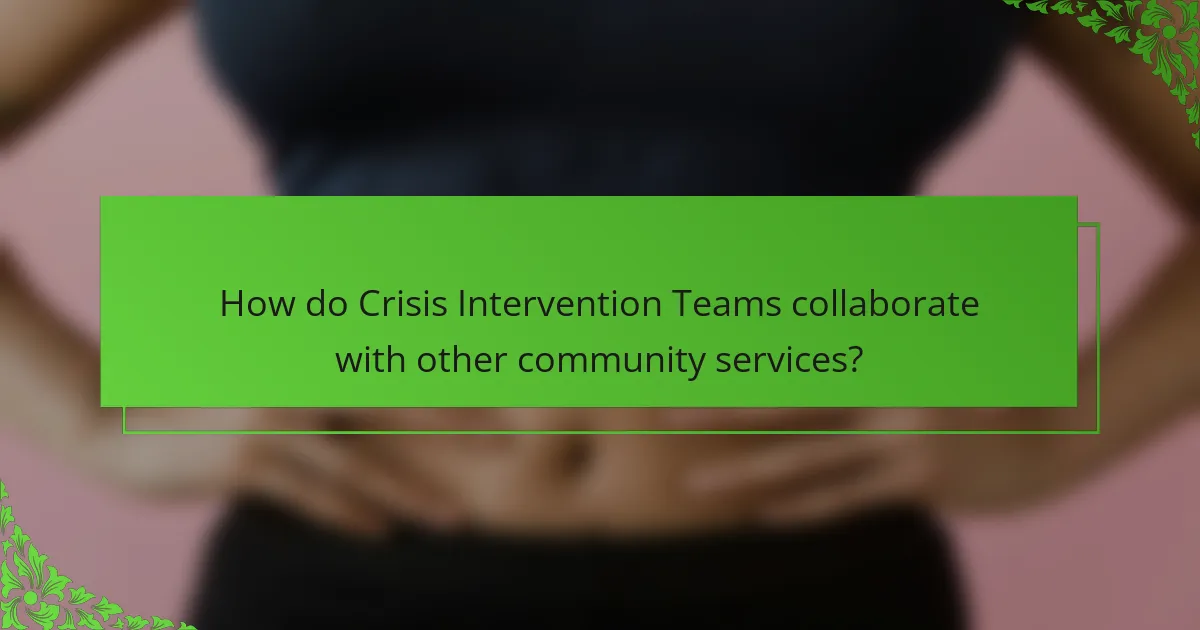
How do Crisis Intervention Teams collaborate with other community services?
Crisis Intervention Teams collaborate effectively with community services to provide comprehensive support. They work with mental health professionals, law enforcement, and social services to address crises holistically. This collaboration enhances resource sharing, improves response times, and ensures individuals receive appropriate care. For instance, joint training programs foster understanding and coordination among team members and community services, leading to better outcomes for those in crisis.
What role do partnerships play in enhancing effectiveness?
Partnerships significantly enhance the effectiveness of Crisis Intervention Teams (CIT) by fostering collaboration and resource sharing. These alliances with local organizations, law enforcement, and mental health agencies create a more integrated response to crises. For example, joint training programs improve team coordination, leading to quicker and more effective interventions. Additionally, partnerships can provide vital resources, such as funding and specialized expertise, which enhance the overall effectiveness of CIT initiatives. This collaborative approach ultimately leads to better outcomes for individuals in crisis and strengthens community trust in emergency services.
How can teams improve communication with local authorities?
Crisis intervention teams can improve communication with local authorities by establishing regular meetings, sharing information proactively, and collaborating on training exercises. These strategies foster trust and ensure a coordinated response during crises. Effective communication enhances community safety and resource allocation.

What are the future trends for Crisis Intervention Teams?
Future trends for Crisis Intervention Teams focus on enhanced training, integration with mental health services, and community collaboration. These teams are increasingly adopting data-driven approaches to improve response effectiveness. Technology will play a significant role, with tools like mobile apps for real-time communication and resource sharing. Additionally, there is a growing emphasis on diversity training to better serve varied populations. Finally, ongoing evaluation and adaptation of strategies will be essential to meet evolving community needs.
How is technology impacting crisis response strategies?
Technology significantly enhances crisis response strategies by improving communication, data analysis, and coordination among Crisis Intervention Teams (CITs). These teams leverage advanced tools to assess situations in real-time, facilitating quicker decision-making.
For instance, mobile applications enable CITs to share critical information instantly, ensuring all members are informed and prepared. Additionally, data analytics helps identify patterns in crisis situations, allowing teams to develop proactive strategies for intervention.
The integration of technology fosters collaboration with community resources, enhancing the overall effectiveness of crisis responses. This synergy not only improves outcomes for individuals in crisis but also strengthens community trust in intervention processes.
In summary, technology transforms CITs by streamlining operations, improving response times, and fostering stronger community relationships.
What emerging practices are being adopted in 2025?
Crisis intervention teams in 2025 are increasingly adopting community-based approaches and collaborative models. These teams focus on integrating mental health professionals with law enforcement to enhance response effectiveness. Data shows that communities with these teams report a 30% reduction in repeat incidents. Additionally, training programs are evolving to include de-escalation techniques and cultural competency, reflecting the unique needs of diverse populations. As a result, the role of crisis intervention teams is expanding to foster trust and cooperation within communities.
What best practices can enhance the impact of Crisis Intervention Teams?
Crisis Intervention Teams can enhance their impact by incorporating training, community collaboration, and mental health resources. Effective training ensures team members are equipped to handle diverse situations. Collaboration with local organizations fosters trust and awareness. Access to mental health resources allows for timely support, improving outcomes for individuals in crisis.
